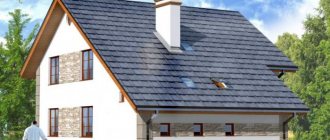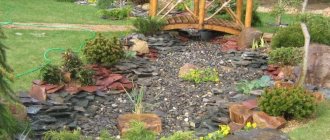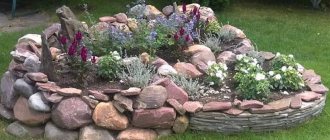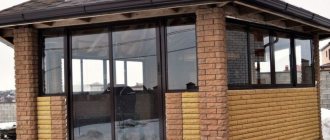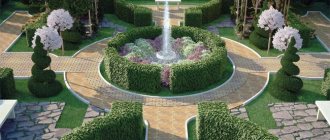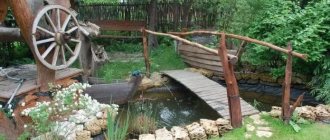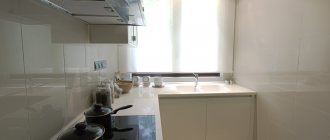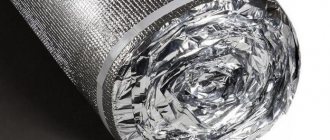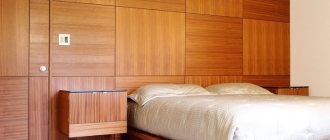Landscape construction is an effective way to improve the territory of a suburban or summer cottage and make it unique. Many owners of private houses use various tricks, from designing paths to green hedges. Today, the most popular method of arranging the territory is do-it-yourself gabions: the step-by-step instructions are so simple that you can do the construction of the structure yourself.
A gabion is a structure made of a metal frame (mesh) filled with stones or other material
From the battlefield to the estates. History of gabions
As you know, many things appeared thanks to, if it is appropriate to say so, wars. Canisters, for example, microwave ovens, adhesive tape or canned food, which Napoleon ordered technologists to invent. The history of gabions is also connected with the French emperor. He widely used tall, bottomless baskets to protect trenches and guns. In Rus', such mobile structures were called tours, and in Europe, gabions, from the Italian word meaning “large cage.”
Gabions are still used in military affairs. But, starting from the end of the century before last, more and more in engineering. Lightweight, mobile, but durable, gabions, as practice has shown, perfectly strengthen slopes, banks, and areas at risk from the point of view of possible landslides.
In recent years, gabion structures have become very popular among “green” architects and landscape designers.
Basic types of gabion products
There are, in fact, three main varieties: gabions are box-shaped, cylindrical and mattress-mattress (in other words, Reno mattresses).
The first, in the form of parallelepipeds, are to strengthen steep banks, slopes, walls, and make high fences from them.
The latter are presented in the form of cylindrical baskets, more suitable for creating decorative accessories - columns, columns and the like.
Third, they line flat areas and fix the bottoms of reservoirs.
These are the basic types of gabions, but of course there are more variations: cubic, spherical, conical...
Gabions can be of almost any shape, with any filling, which makes these structures especially attractive in the eyes of landscape design specialists.
Preparing everything you need
It is not recommended to start work alone. For manipulations you will need:
- containers for gabions;
- knitting wire;
- stone aggregate;
- mount;
- anchors;
- shovel;
- hammers.
A gabion stapler can be a tool for fastening parts. It can be pneumatic or mechanical. Such devices reduce the time spent on work. Instead of knitting wire, staples in the form of rings are used to fasten the meshes. They are made from wire with a diameter of 3 mm. The coating can be a zinc-based layer. This material comes in a tape that is installed in the stapler.
If the construction of a retaining wall made of gabions will involve manual connection of elements using wire, it should be wound with a snake. You need to leave a distance of 10 cm between the turns. The process requires labor and time, but will save money. You can determine the required number of staples and wire taking into account the weight of the containers.
Advantages and disadvantages of gabions
Mesh cells have quite a lot of advantages, among them:
- Durability . Typically, the gabion frame consists of very strong, double-twisted wire and reinforcement.
- Durability . Gabion products do not crack, tear, break under loads, or deform when the soil settles.
- Flexibility . Thanks to the wire structure, the “big cages” tolerate soil erosion without problems, even if it occurs at the base of the structure.
- Moisture resistance . Gabions absorb water without being destroyed. This quality is especially valuable if the site is located in the so-called erosion zone. Gabions are also irreplaceable when additional drainage is required.
- Air permeability . Giving the impression of a blank, monolithic fence, gabions nevertheless allow air to pass through well.
- Environmental friendliness . Everything that has the prefix “eco” is in fashion, and gabions are an example of naturalness.
- Aesthetics . Gabions have a bold, textured, always neat appearance.
- Affordability . Gabions are significantly cheaper than their concrete counterparts and are easy to use.
Do they have any disadvantages? Many consider the disadvantage to be the difficulty of installing large and tall gabion sections. In this case, specialists are hired for installation.
Properties
The characteristics of the gabion are influenced not only by the diameter of the metal mesh and the frequency of the rods, but also by the way the wires are connected to each other. Thus, the chain-link mesh cannot provide a strong connection, because the wire in it is not fastened, but only intertwined, and the rods will slide off under the influence of even a small load. To prevent this, during manufacturing they use the technology of double torsion of rods for their high resistance to loads of various types - rupture, compression, torsion. The result is a very strong and reliable reinforced structure that is capable of transmitting moisture.
Where are gabions used?
The scope of application of mesh containers is quite extensive. We list the most popular options for using gabions in landscape design:
– Terracing . Gabions will save the unfavorable terrain. With their help, you can straighten and level a platform located at an angle, creating a multi-stage terrace.
– Retaining walls . Boxes filled with stones, wooden blocks or saw cuts are in amazing harmony with lush greenery and flowers. And if you add a canopy or arch to this symbiosis, you will get a secluded, shady gazebo.
– Fences and enclosures . Gabions, combining various fillers, can surround the entire estate. Or cover outbuildings or cover the compost pit. Both the entire fence and, for example, its basement part are built from gabions. Then wooden panels or boxes with vegetation are attached to this base.
You can alternate hedges and gabions: a beautiful bush, next to a mesh section and again a bush. Where large fences are undesirable, low barriers and even borders are made from gabions.
The field for creativity, “game”, and configurations is so wide that a separate term has appeared - pergons. So, they call the same bulk walls and partitions, the function of which is to zone and decorate the site. The pergons make it both colorful and neat at the same time.
Fences made of gabions and pergons - photo
– Reservoirs . The bottom is strengthened with mattress gabions, and the banks with box-shaped gabions. Experts especially recommend finishing the reservoir with gabions if the soil on the site is too wet and requires improvement of the drainage system.
At the same time, please note that the shape of the reservoir can be any, and gabions can become not only a successful engineering solution, but also a beautiful finish for the reservoir. Form them into sides, and an ordinary pond will be transformed into a noble pool.
– Outdoor fireplaces , hearths, barbecues can also be made of durable boxes filled with fire-resistant stones.
– It is quite possible to make garden furniture, benches and tables from small gabions.
Such items are made by combining various fillers or the gabions themselves with other materials - ceramic tiles, tempered glass, wood. For example, a compact pile of light stones, fastened with a mesh and covered with glass, easily turns into a tea table. A larger wooden tabletop on a gabion becomes a dining table. You can even make a garden version of a bar counter from gabions.
– Rock garden – and it can be made by resorting to a mesh structure. Such an alpine slide will not “creep”, maintaining a somewhat strict but effective appearance.
Gabions, in addition, accent flower beds, frame stairs and paths, individual trees, and form them into columns, arches, stands for garden lanterns, urns and flower vases, abstract figures and even sculptures...
Gabions are an unusually versatile and flexible building and design material. This property is imparted to them not only by their flexible design, but also by their filling. After all, the “filling” of cellular boxes can be very different!
Requirements for structures
Before making a retaining wall from gabions, you should familiarize yourself with VSN-APK 2.30.05.001 03. This is a manual where you can find regulatory documents. According to them, today there are two types of walls based on gabions, which can be with a reinforcing panel or massive. The last option is most often used. To create, box-shaped gabions are required. Flat ones, also called mattress foundations, are sometimes used as a foundation for a wall. Massive structures hold the soil due to their own weight.
When making a retaining wall, certain requirements must be taken into account. For example, when designing structures, it is necessary to carry out calculations. During this process, you must check the stability of the structure, determine its cross-section depending on the characteristics of the soil and the height of the system. During the stability check, you must determine the risk of overturning, shifting, and failure of supporting parts.
What is gabion mesh filled with?
The first, “soldier’s” containers were filled with earth, grass and driftwood, with everything that came to hand.
The most popular, however, are gabions with stone “insides”. By the way, these have been made since ancient times not only in Europe, but also in Japan. Suitable fragments of granite, sandstone, dolomite, marble, gypsum spar, quartzite, limestone, gneiss, basalt, crushed stone, river pebbles... An ordinary cage filled with stones will suit any architecture, any style of landscape art.
But it’s not a sin to deviate from the classics. Let's say, add artificial ones that glow in the dark to natural minerals - can you imagine how enchanting this structure looks with luminescence?
Quite often, different types of stone are also combined to create, for example, a color gradation: a dark base and a light, “airy” top. Or lay out a pattern - with stones of one shade against the background of stones of another, contrasting one.
It turns out beautifully when, for example, black labradorite is alternated with light, silvery quartzite, rich red or green granite, forming stripes or waves.
It also happens that pieces of glass are interspersed into gabions and LED lighting is attached inside. These luminous boxes look like frozen, petrified flames.
Do you like naturalness and ease? – Then we recommend not filling the containers to the very top, but leaving them half empty: over time, grass will grow in the gaps between the stones, and you will get half-grass gabions.
In addition to stones, mesh containers are filled with saw cuts, logs, fragments of brick or tiles, bark or glass bottles... Anything that fits into the style and design.
Selection of stone material
Box-shaped containers are filled with stones with dimensions of 15-25 cm. For flat elements that are used as a base, it is necessary to select a filler with a fraction of 8.5-15 cm.
The material is selected depending on aesthetic requirements. To provide a fence or retaining wall with an attractive appearance, the front edges can be lined with large, neat stones, and cheaper aggregate can be used on the main volume. The use of local materials, such as gravel or crushed stone, is allowed (provided that the recommended fraction sizes are observed).
What you need to know about installing gabions
Today, containers for gabions, so to speak, “semi-finished products,” are sold in any construction supermarket. The double torsion mesh from which such blanks are made is most often galvanized and coated with an anti-corrosion compound, which makes it resistant to negative natural influences.
The market also offers especially durable containers made from jumpers and rods connected by welding. The greater the load expected, the coarser these rods are, and the more frequent the jumpers.
As for the filler, there is a proven formula: for “land” structures, the size of the stones should be about a third larger than the diameter of the cell. For underwater gabions, only stones larger than the cells by 50% are suitable.
If you are installing gabions to strengthen the soil or support, take into account the properties of the filler stone, its strength, resistance to frost, and moisture resistance. There are, of course, fewer requirements for decorative gabions.
About installing gabions with your own hands
The place where it is planned to strengthen the gabion must be thoroughly cleaned and leveled. Then remove the turf and make a recess along the width of the future box. Straighten it, compact it. It would be a good idea to lay geofabric on the bottom of a gabion that has not yet been installed. Sprinkle gravel on top and compact it.
Next, the walls of the gabion need to be assembled into a box. First, its corners are connected using wire, then the edges are fastened.
If the purchased gabion is not in the form of a finished, welded section, then reinforcement should be driven into the corners of the assembled structure and then dug into the ground.
Now the resulting box must be installed in the prepared trench. The structure will fix itself and get stuck in the ground on its own, under the weight of the stones - this is another advantage of gabions.
It is much more difficult to install large containers - for retaining walls or high fences. In this case, stabilizing columns are first placed and concreted, on which the mesh is then strengthened.
To connect individual gabion blocks into a monolith, use a steel spiral or staples.
Fastening gabions with a spiral
Fastening gabions with staples
You need to slowly fill the boxes with stones. The debris is selected so that the voids between them are barely visible.
Fine-mesh containers can be filled with crushed stone or gravel directly from the bucket.
Gabion filling technology
When the gabion is loaded to a third, its walls should be tightened using special hooks. This prevents the gabions from expanding under the weight of the filler.
The “filling” should overfill the mesh container by a few centimeters, because the stone will subsequently settle a little.
Finally, the finished structure is washed with water from a hose and... They decide what to do next. Leave it “a la naturel” or decorate it, for example, with wooden panels, flower boxes, vines that can be planted directly in the crevices between the stones.
Frame
Selshio considered concreting the pillars inappropriate - why make a “float” that could be squeezed out by frost heaving. And considering that the groundwater level is below 6 m and the soil is loam, you don’t have to worry too much about heaving. Therefore, I made do with drilling holes 150 × 1000 mm, inserted a pipe into the hole, hammered it with a sledgehammer about another 0.5 m deep and sprinkled it with crushed limestone, fraction 20-40 mm, with layer-by-layer tamping.
After installing the pillars, I began assembling gabions - frames without a bottom and a cover, under the pillars instead of a bottom there is crushed stone bedding, under the crossbars there is just soil. I specially did a test backfill in the winter - nothing sank, why spend money on geotextiles or other base. He connected the cards together with staples using a special handicraft tool. The pillars are reinforced with ties (2 mm) - at intervals of 20 cm in a square post, a diamond shape is formed from the ties. There are mesh diaphragms in the crossbars every 60 cm.
I bent the “antennae” and hooked it onto the rod of the adjacent card, and additionally secured it with staples every 20-30 cm. I attached the lintels to the posts in the same way, with staples.
Since the lintels are 0.7 m longer than the cards, I added overlapping mesh overlays and connected them with staples.
I welded the logs after installing the posts and crossbars - if you don’t touch the galvanization, it won’t deteriorate.
Gabions in landscape design - photo
0 0 votes
Article rating
